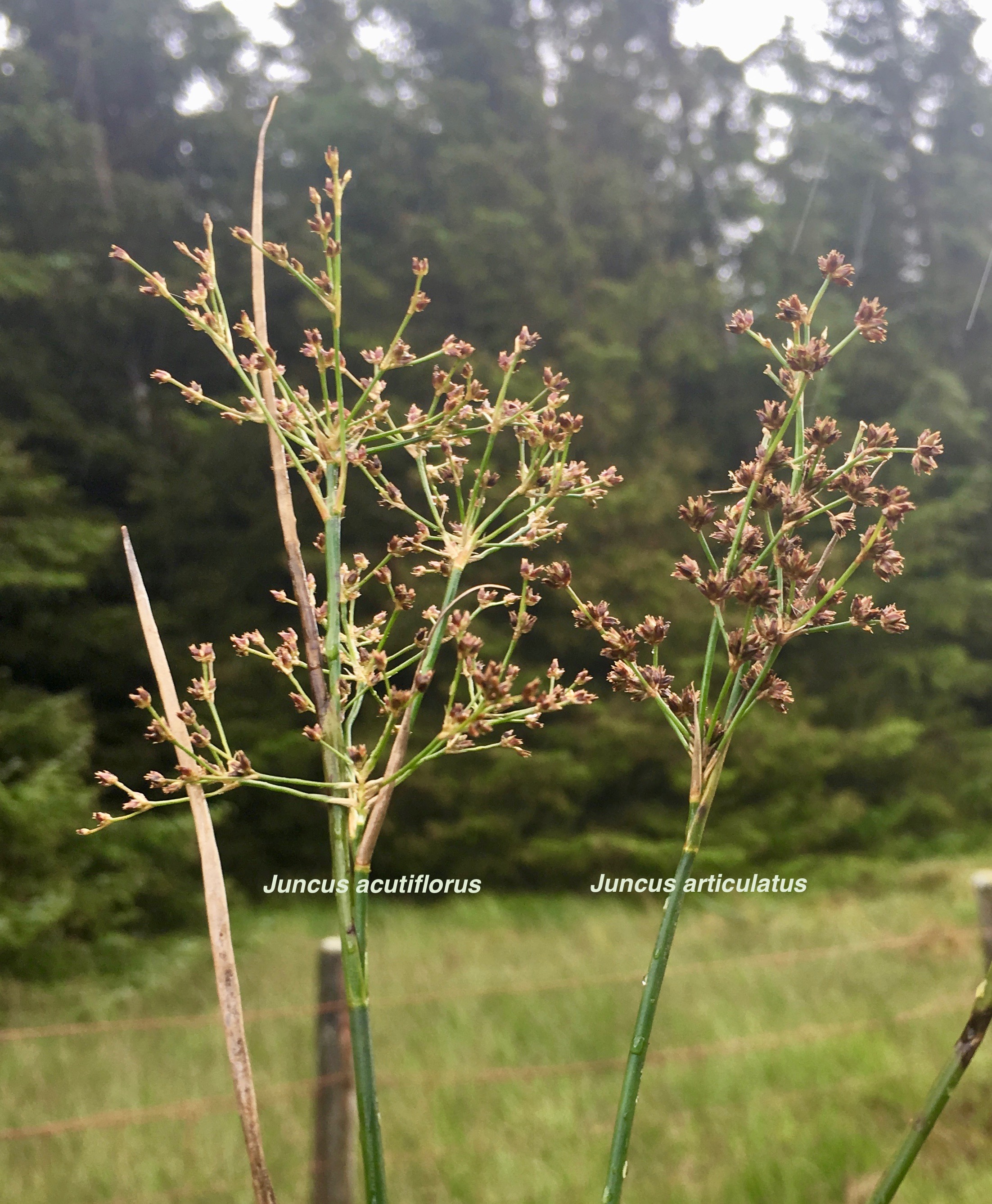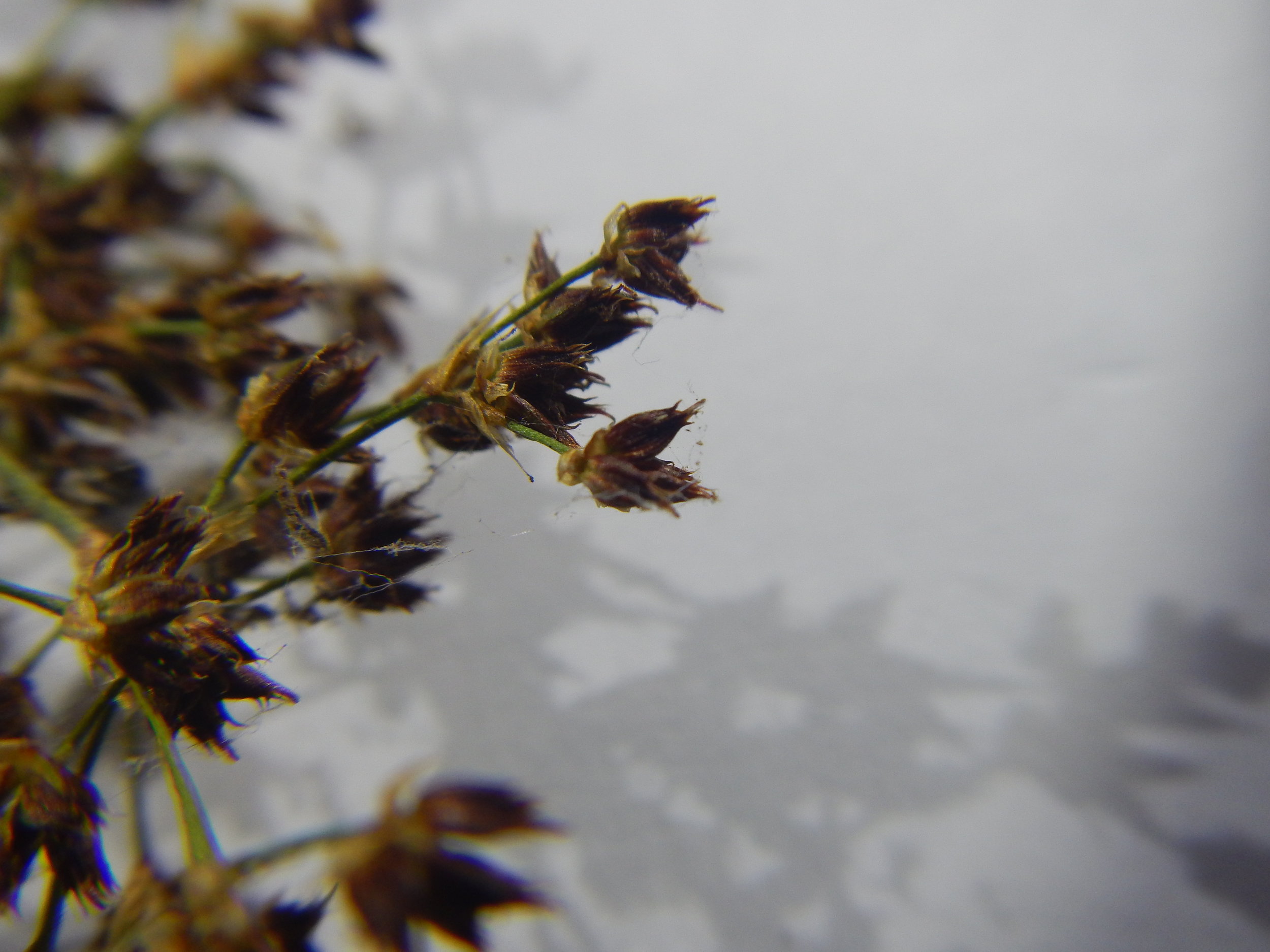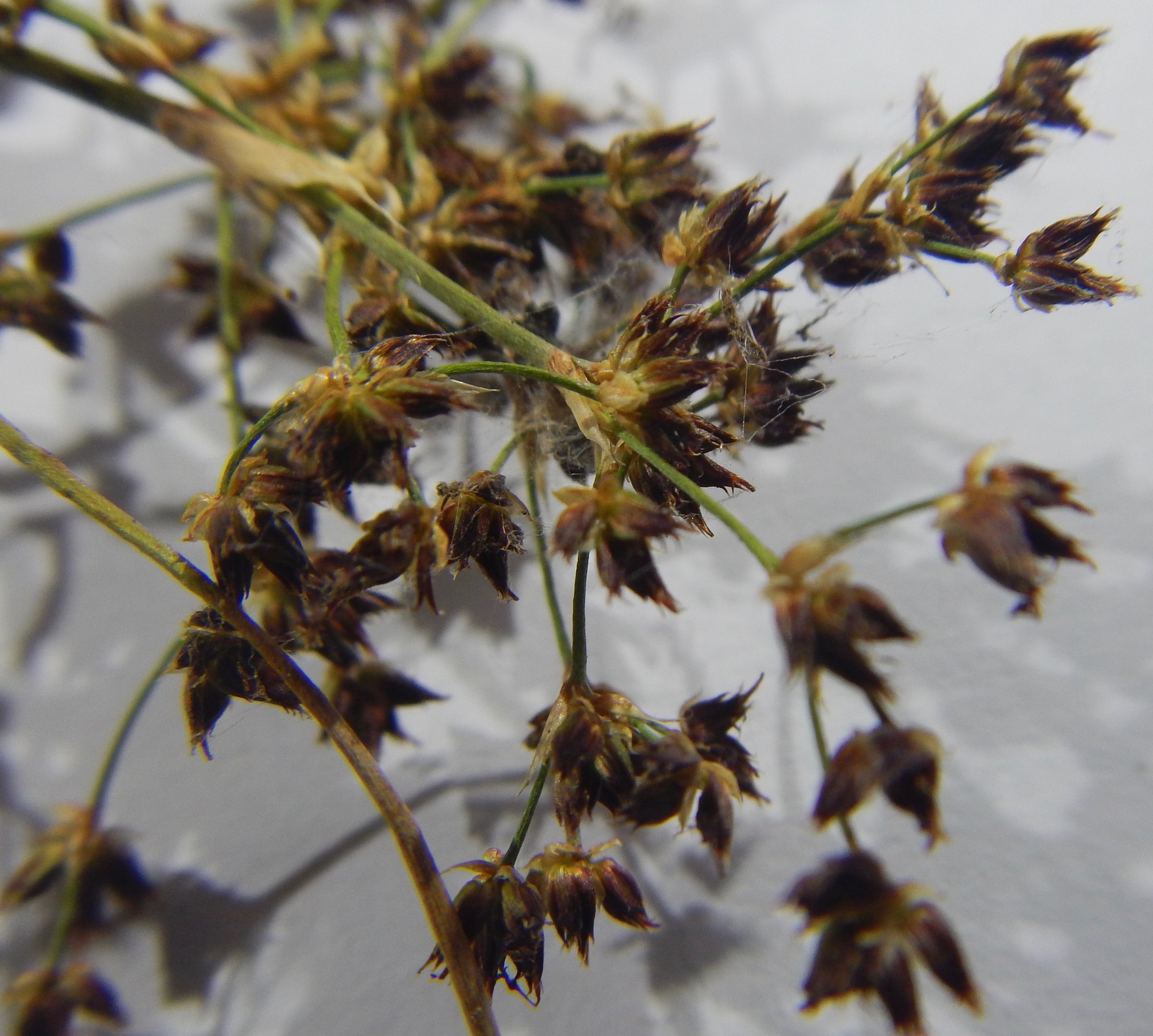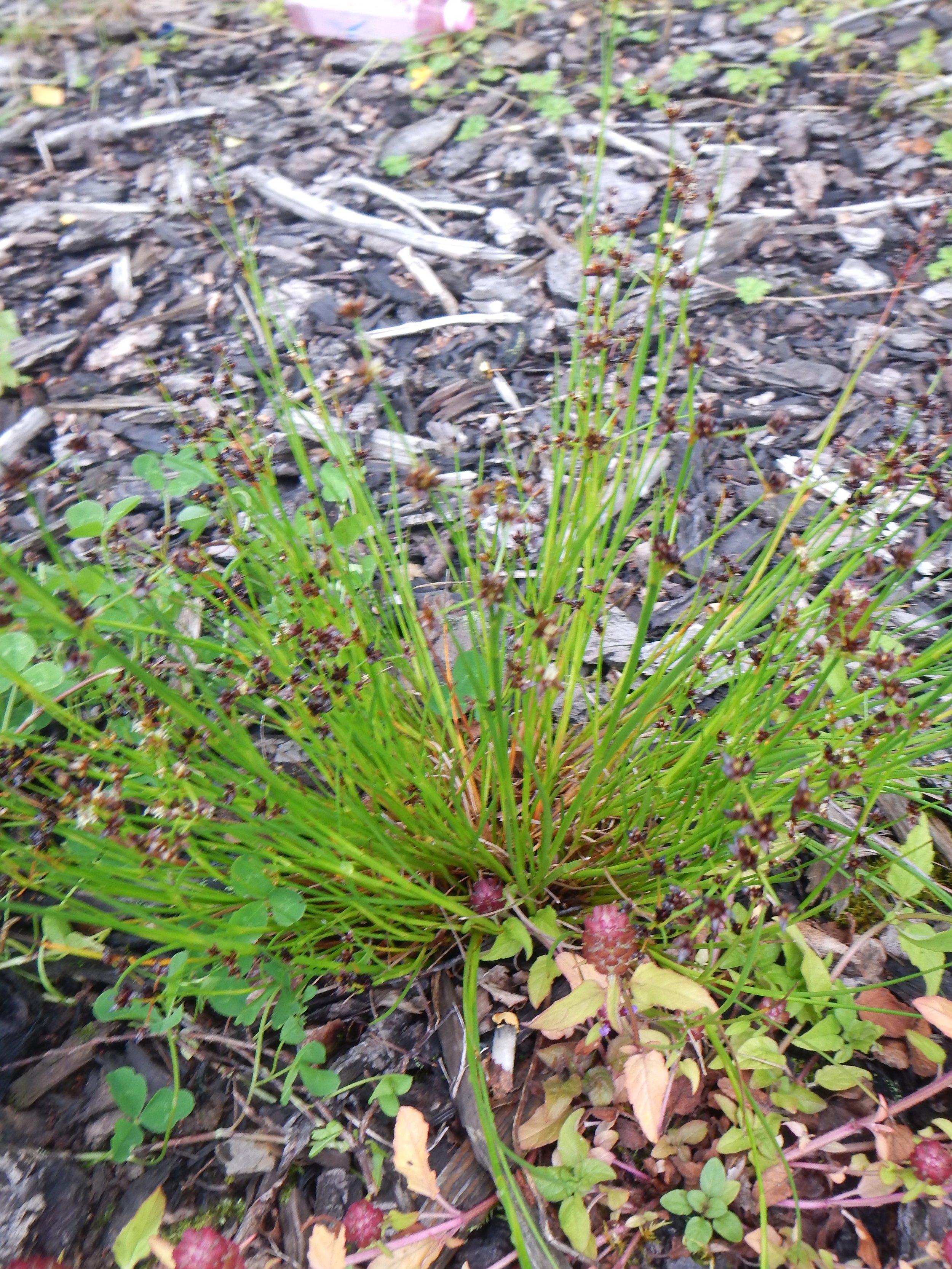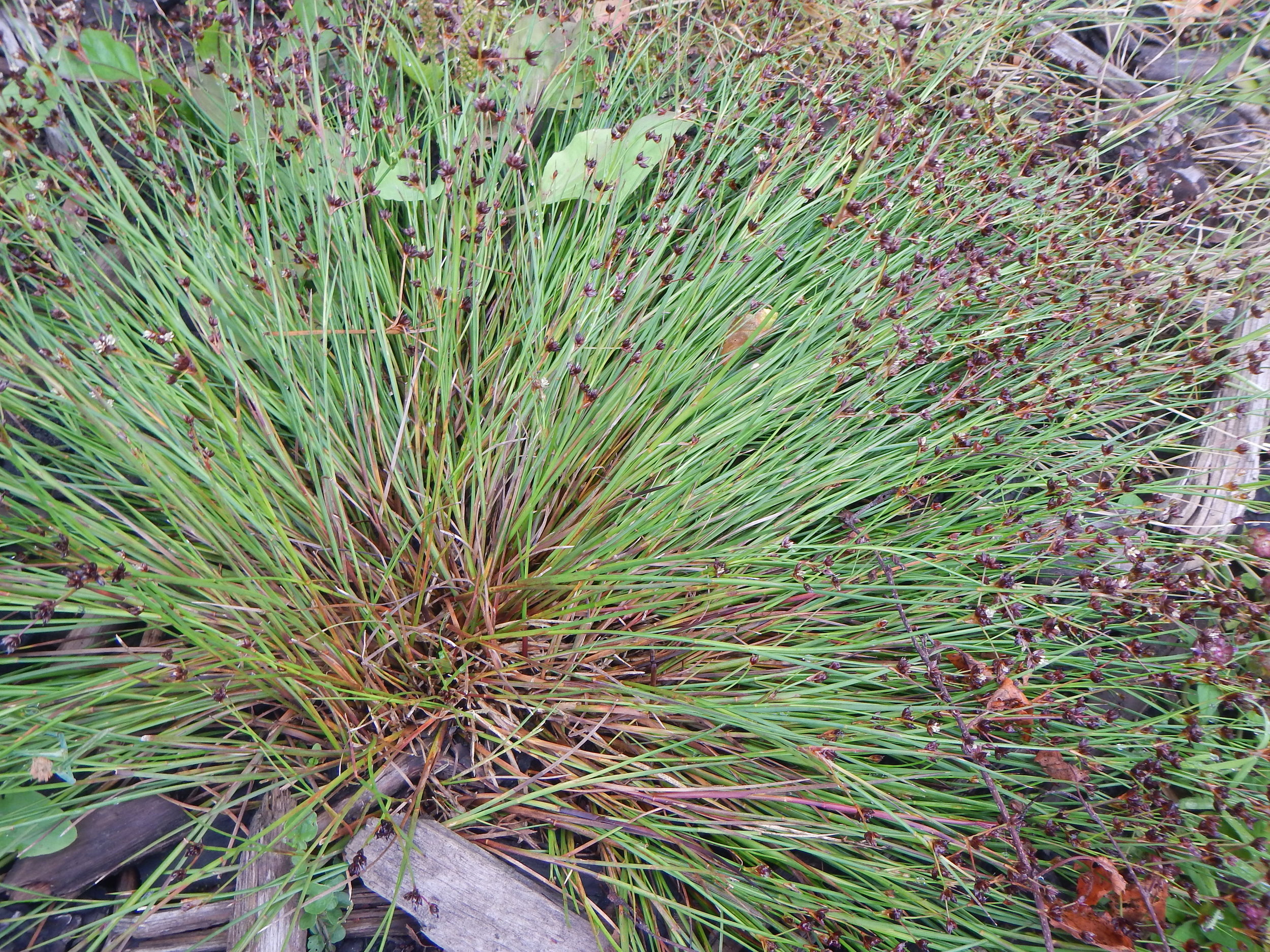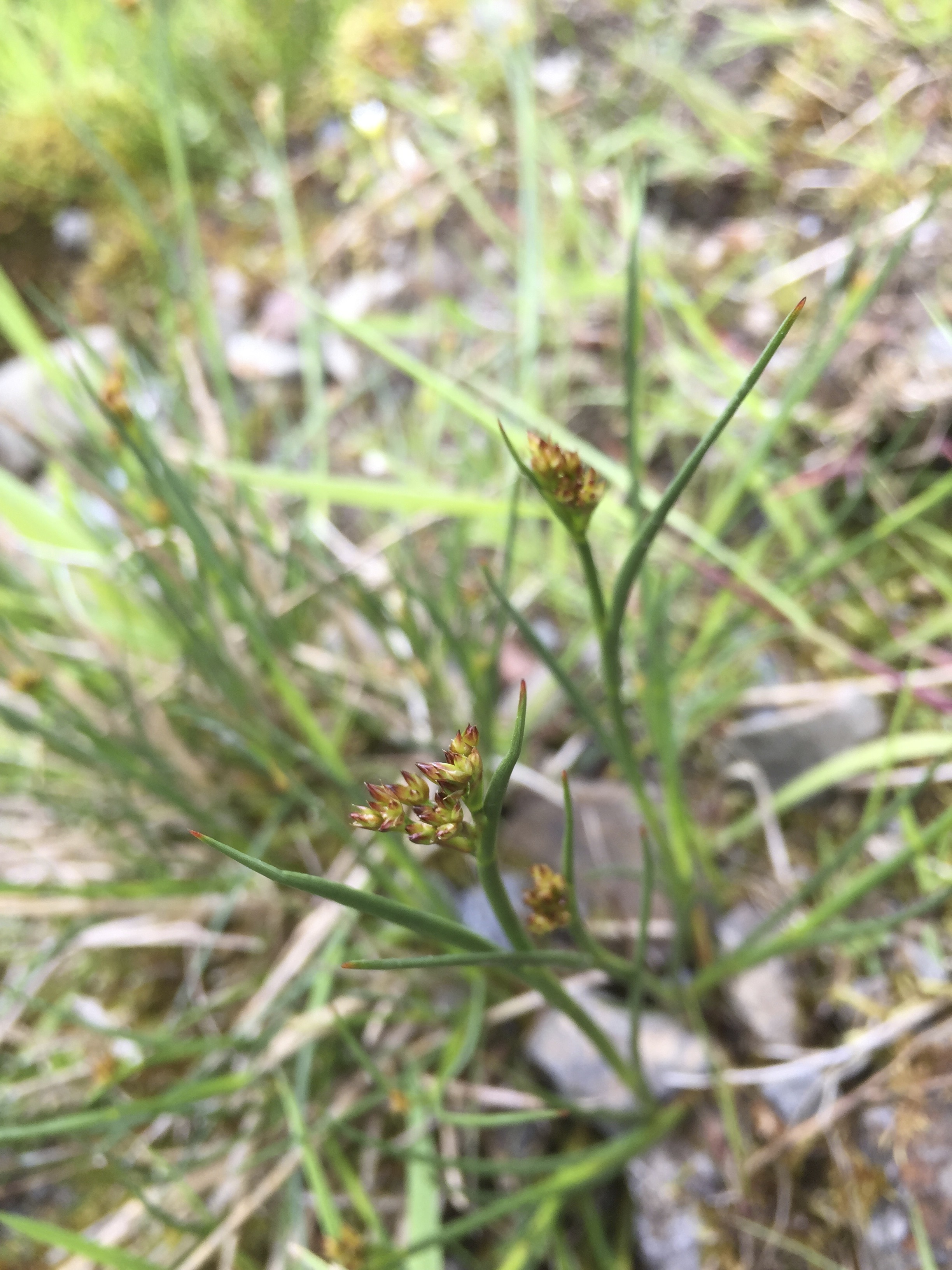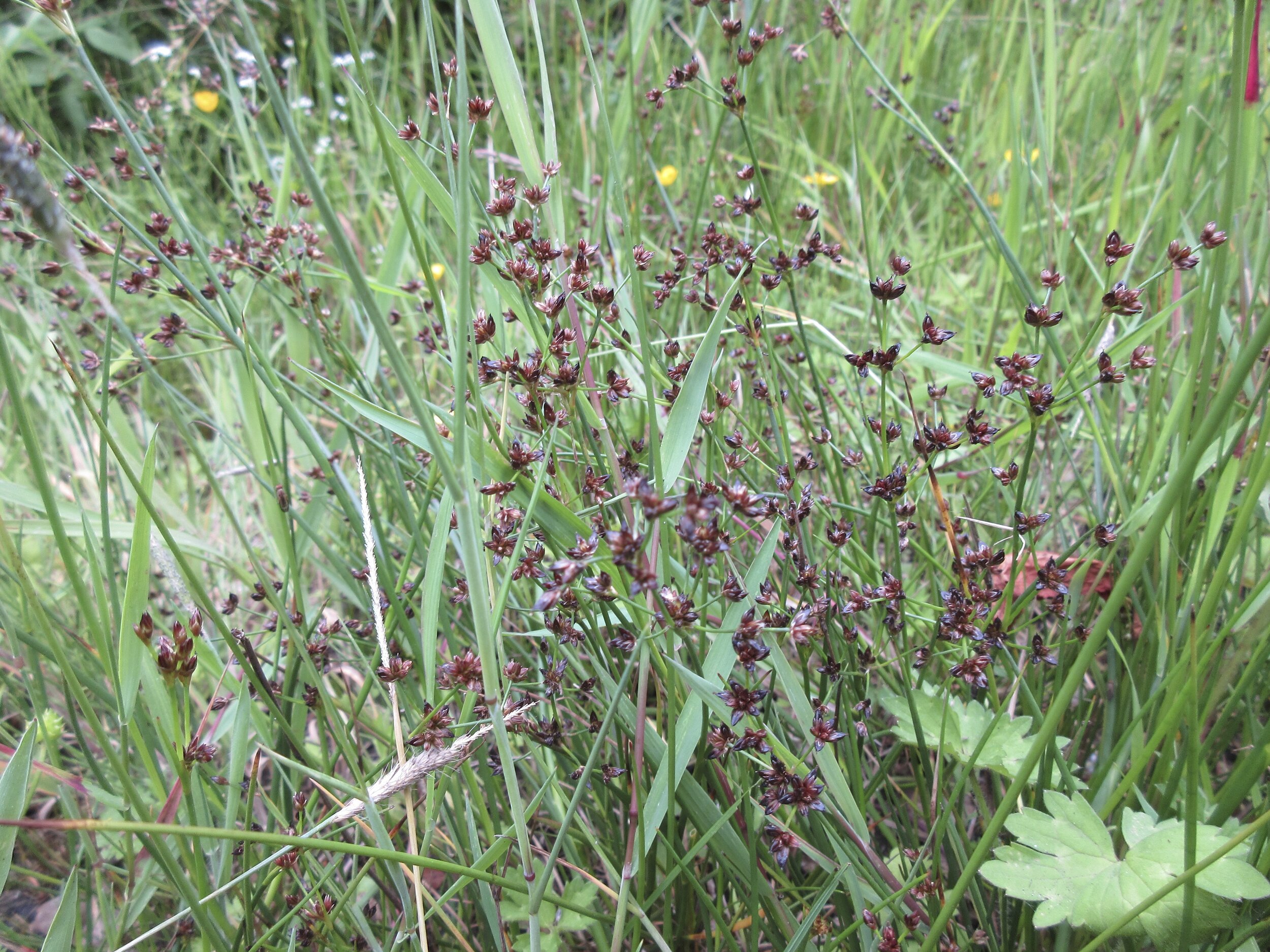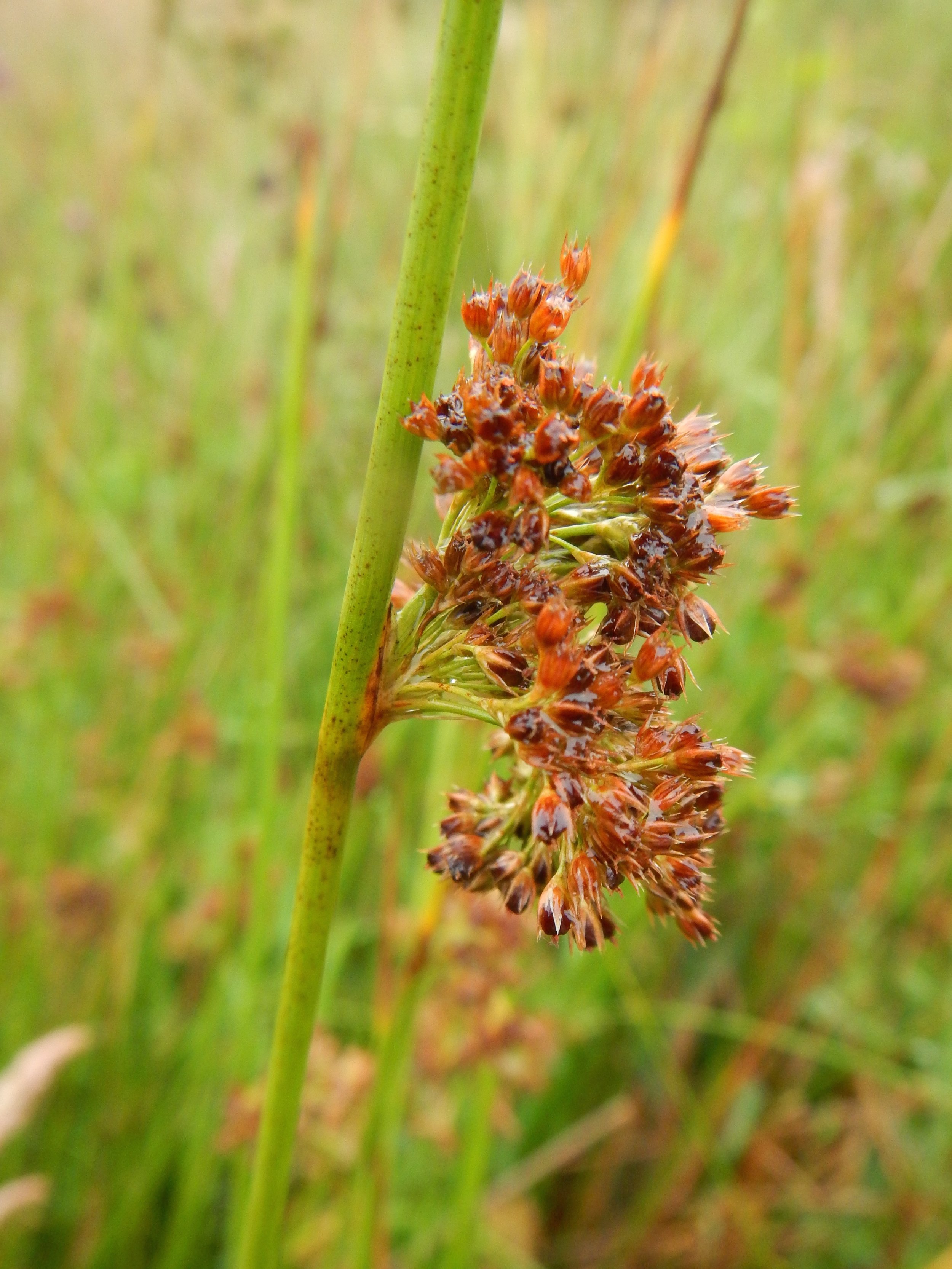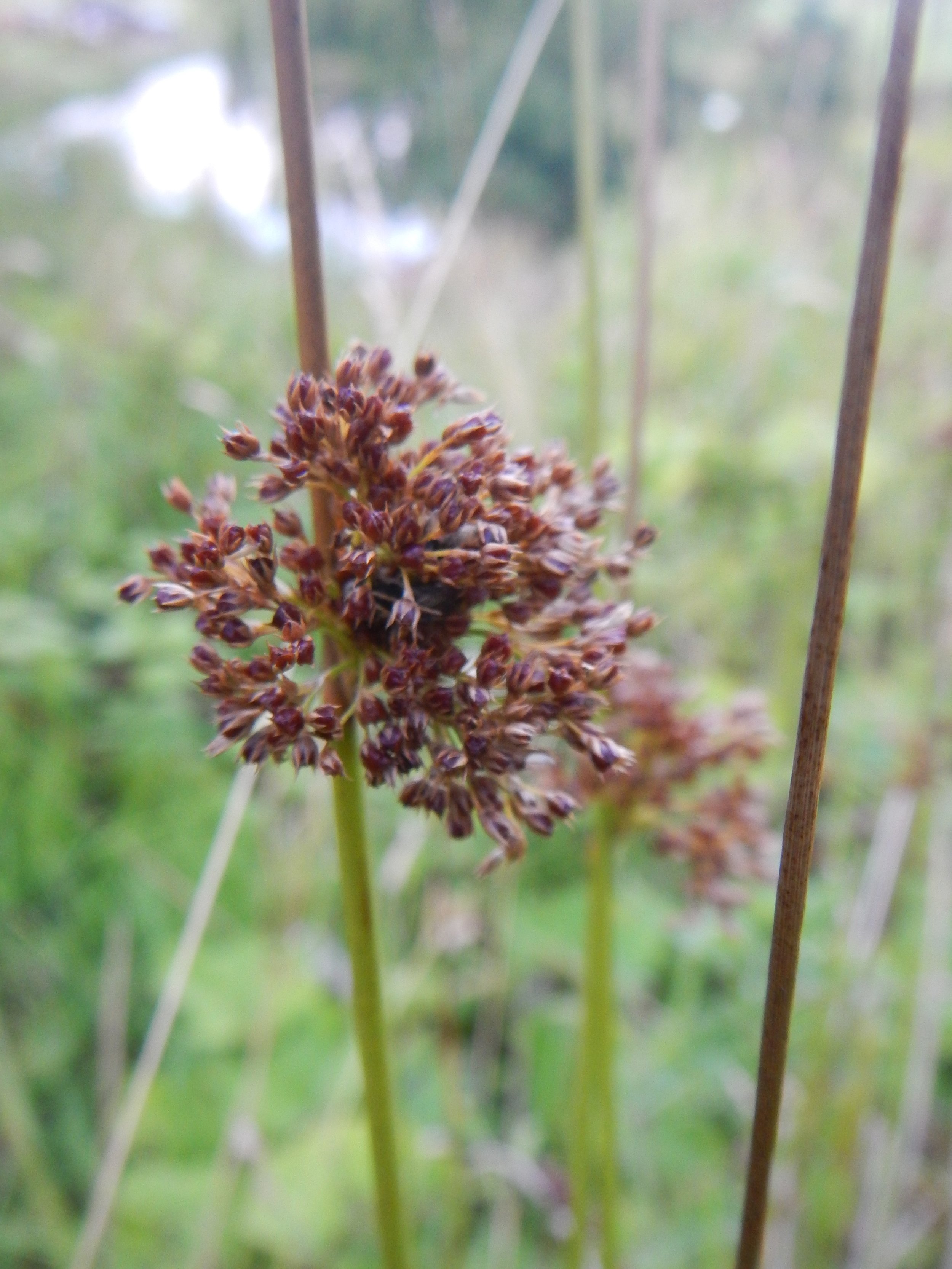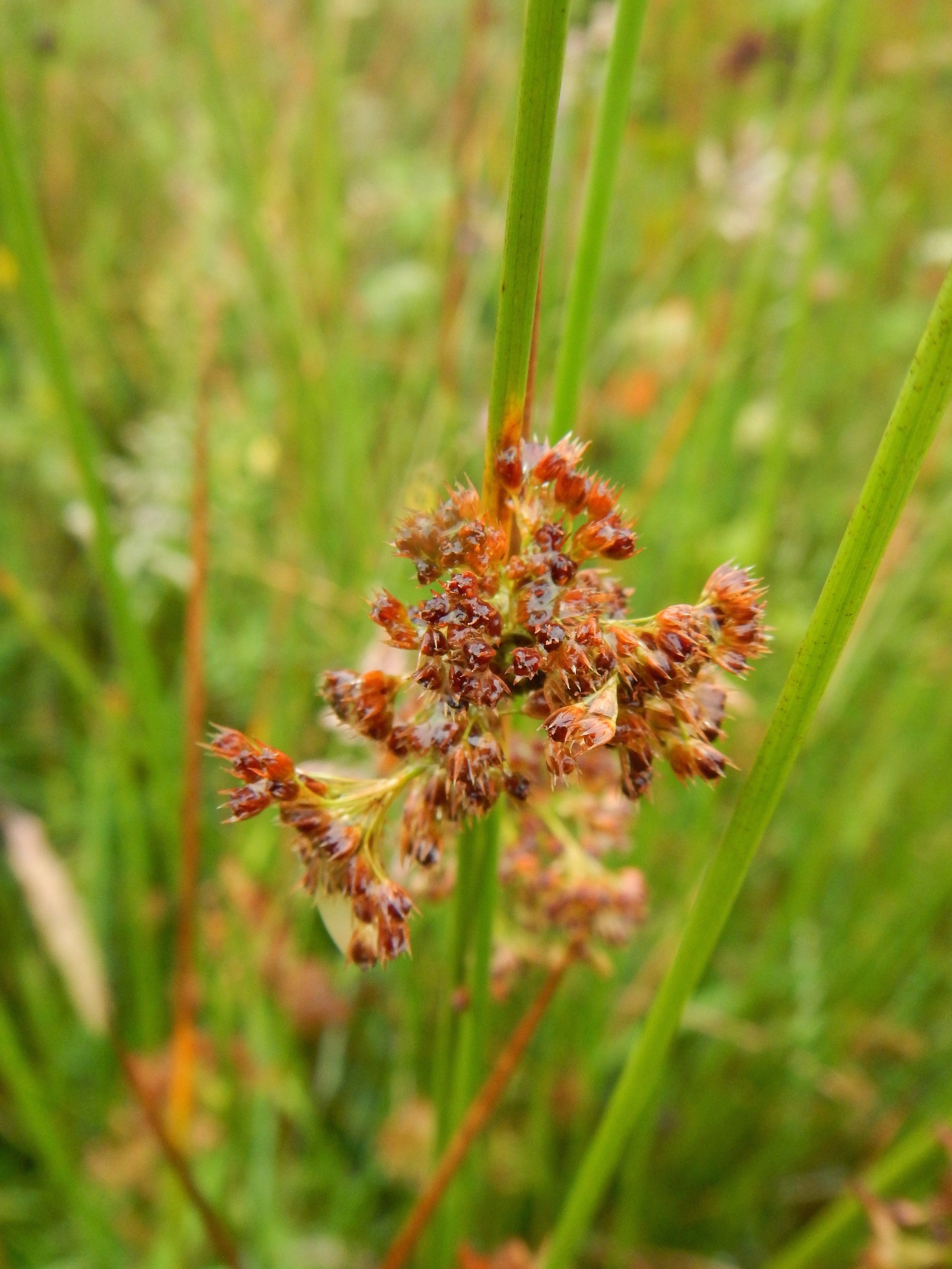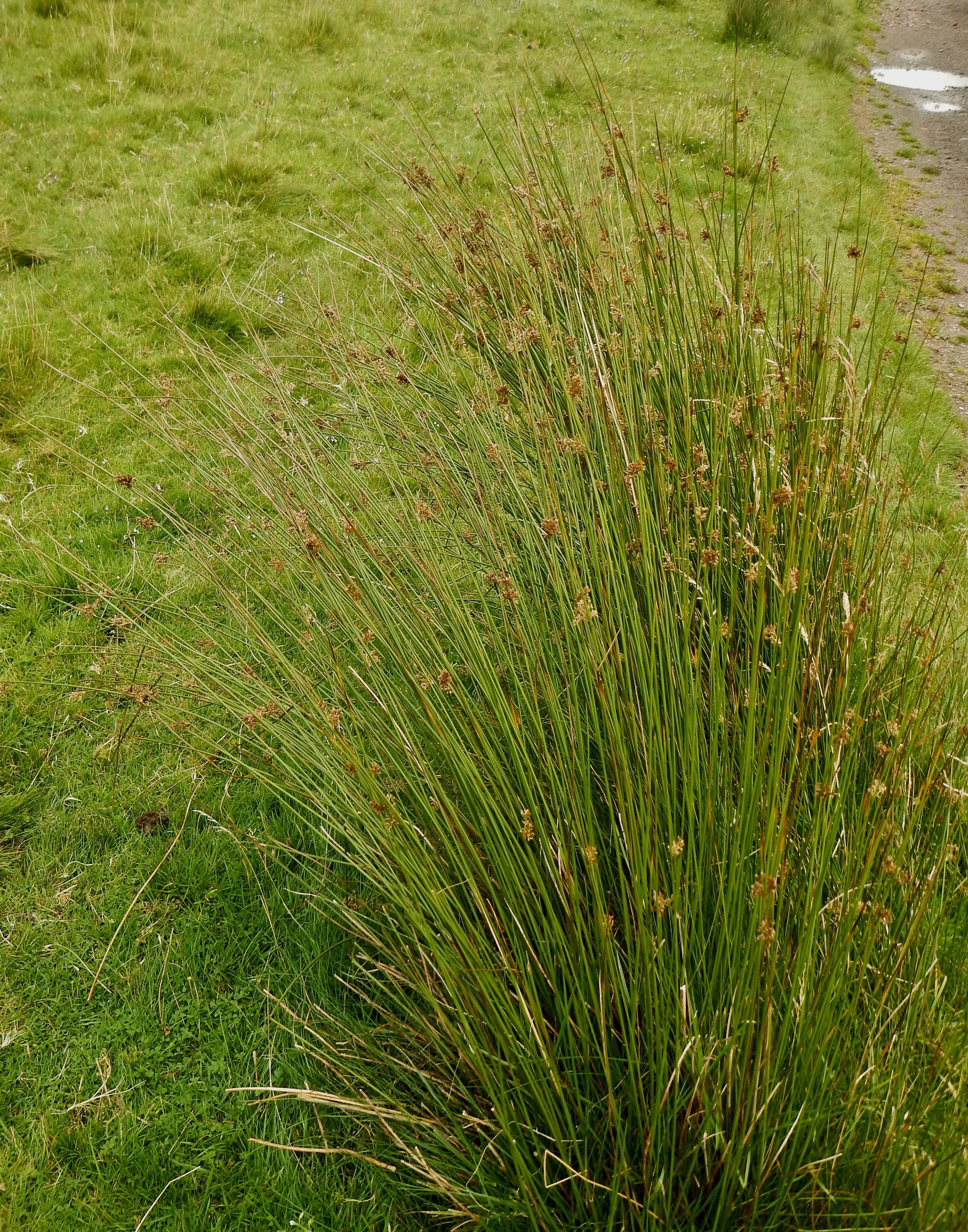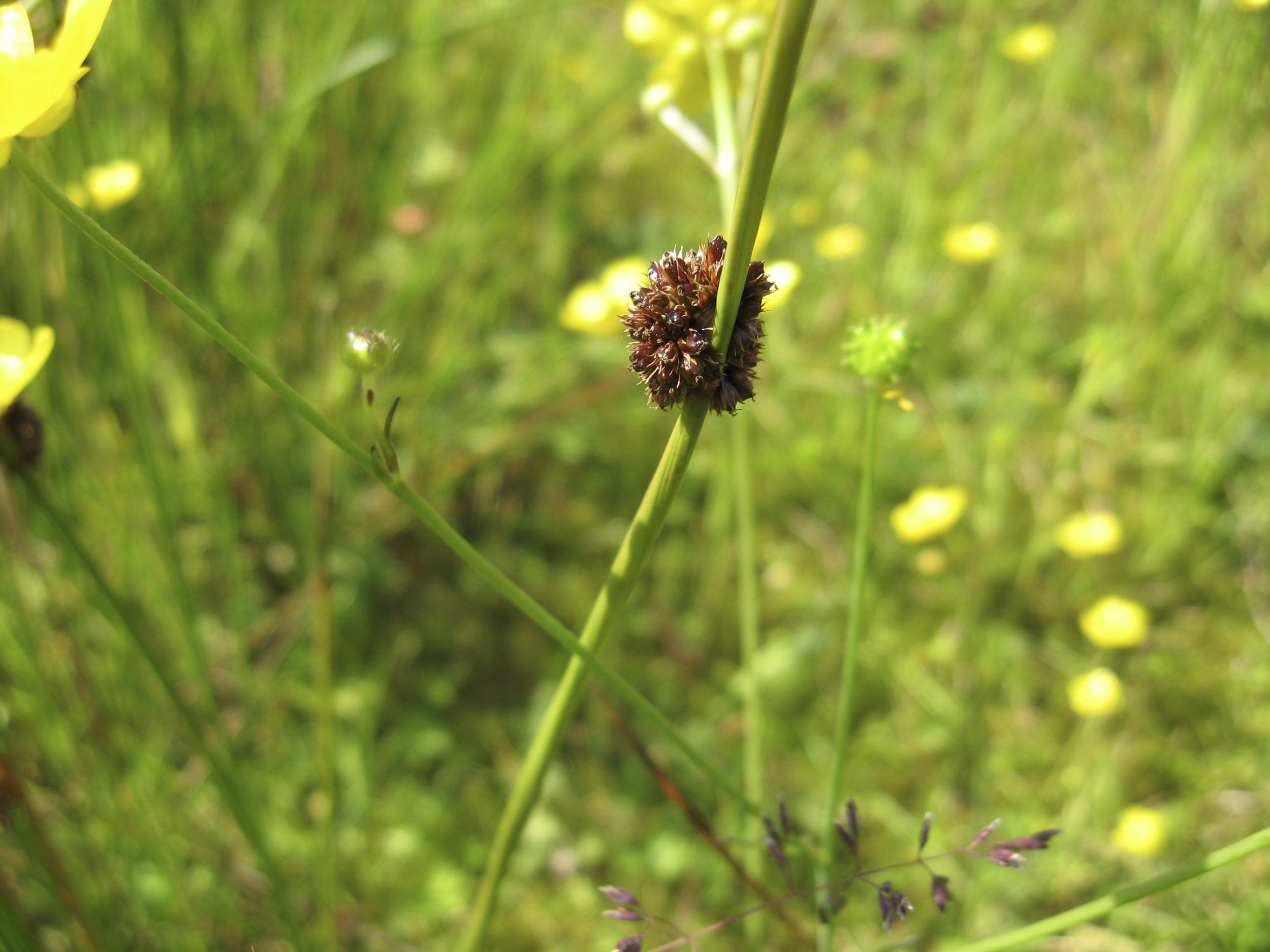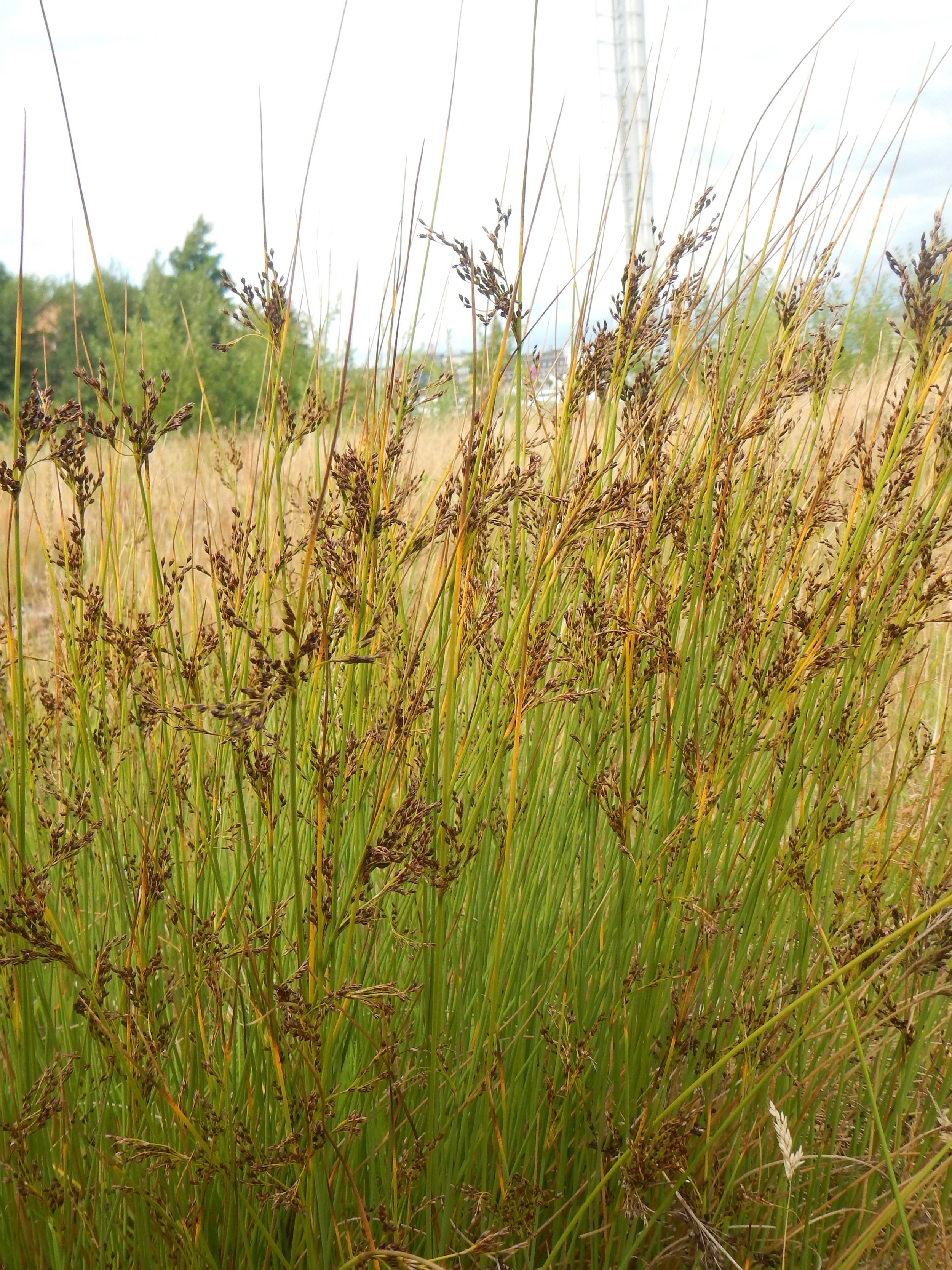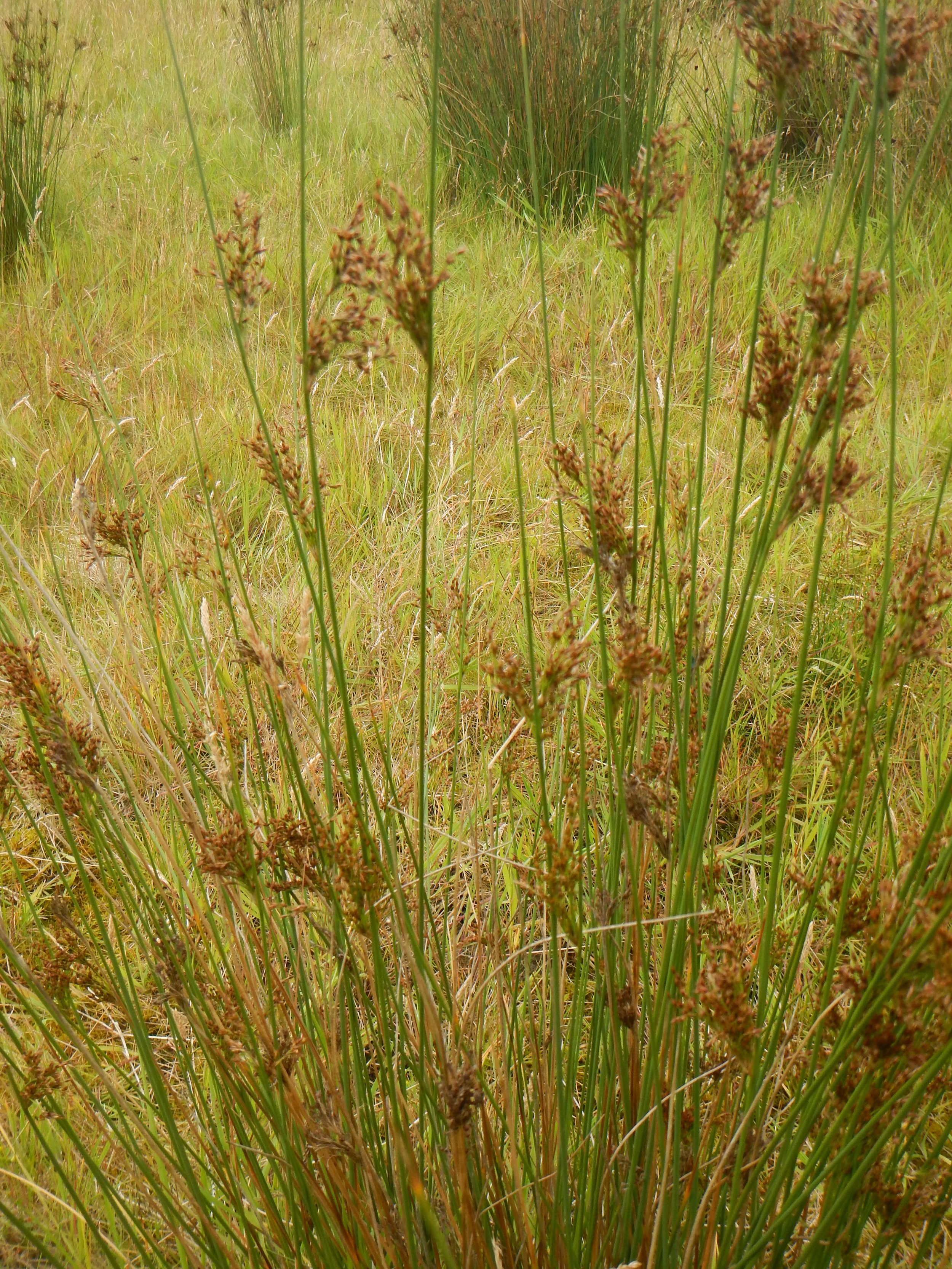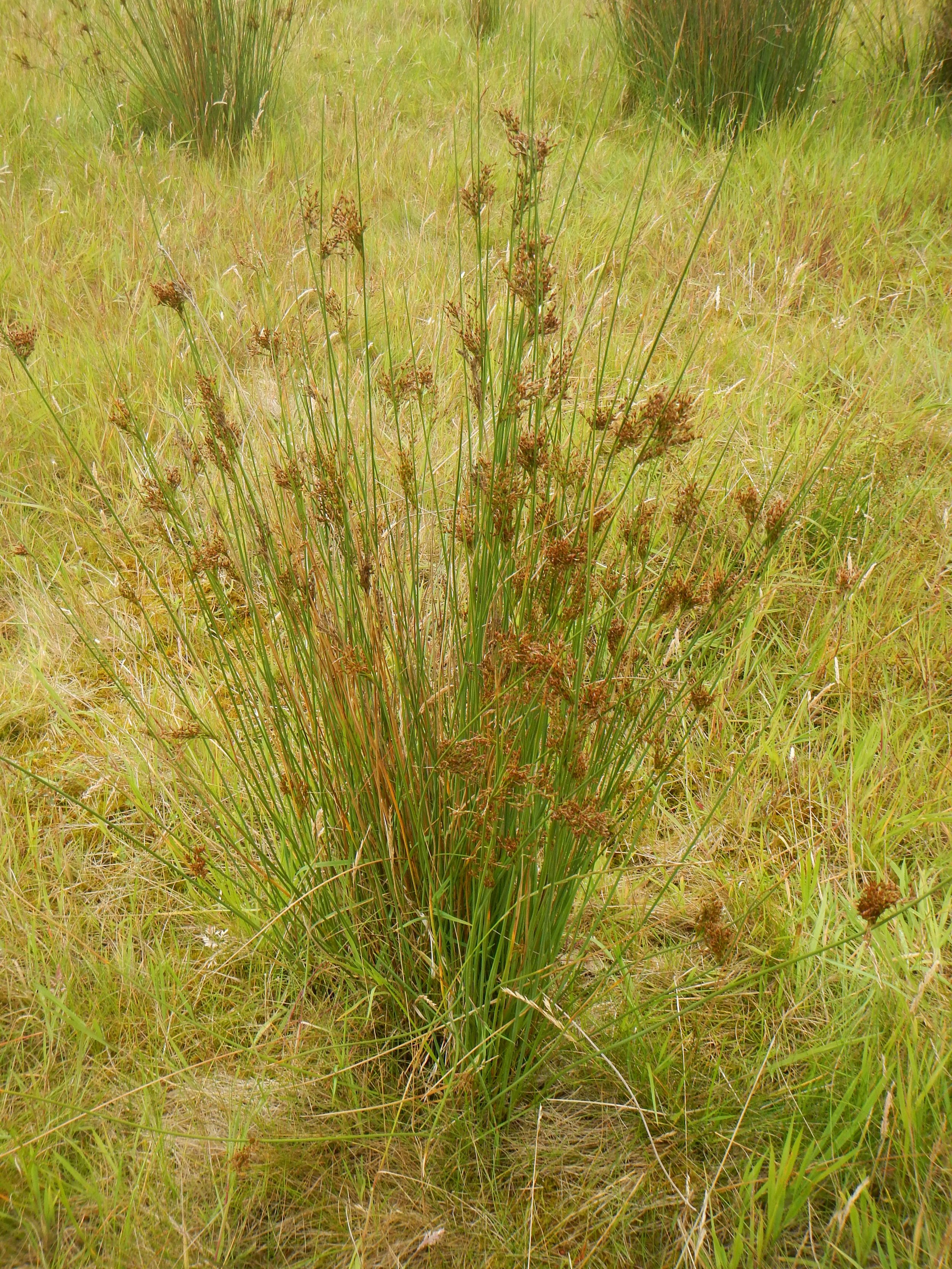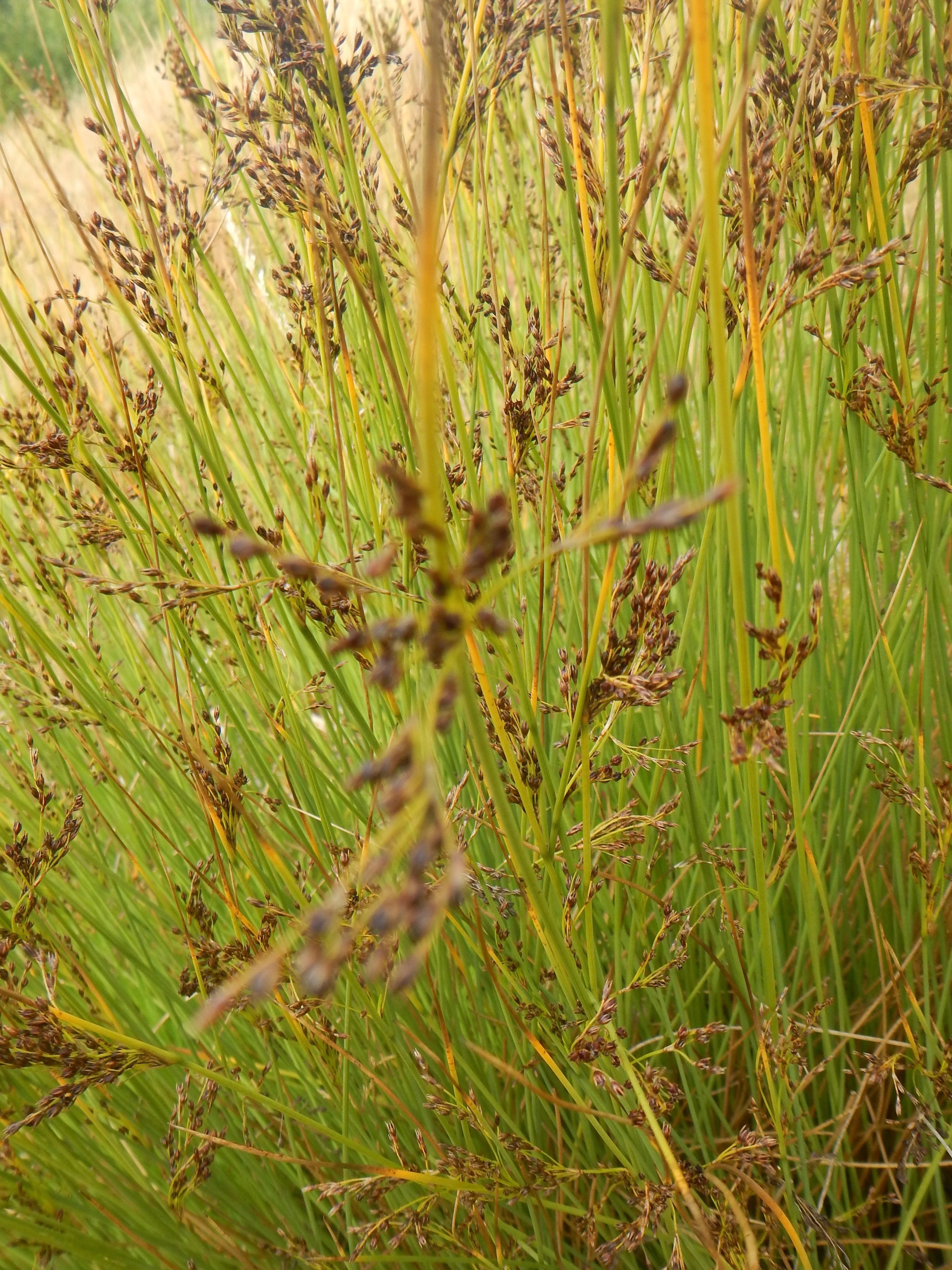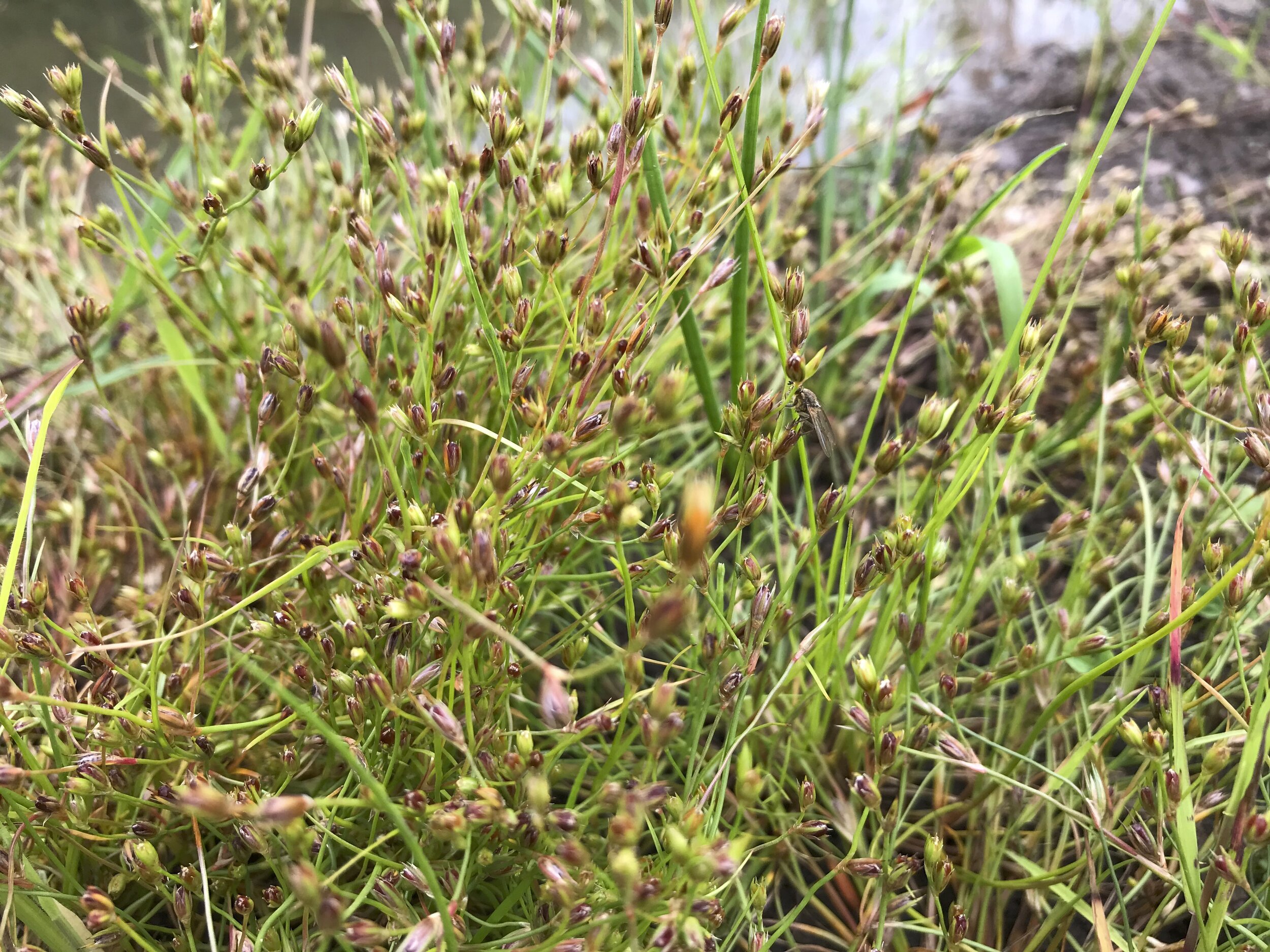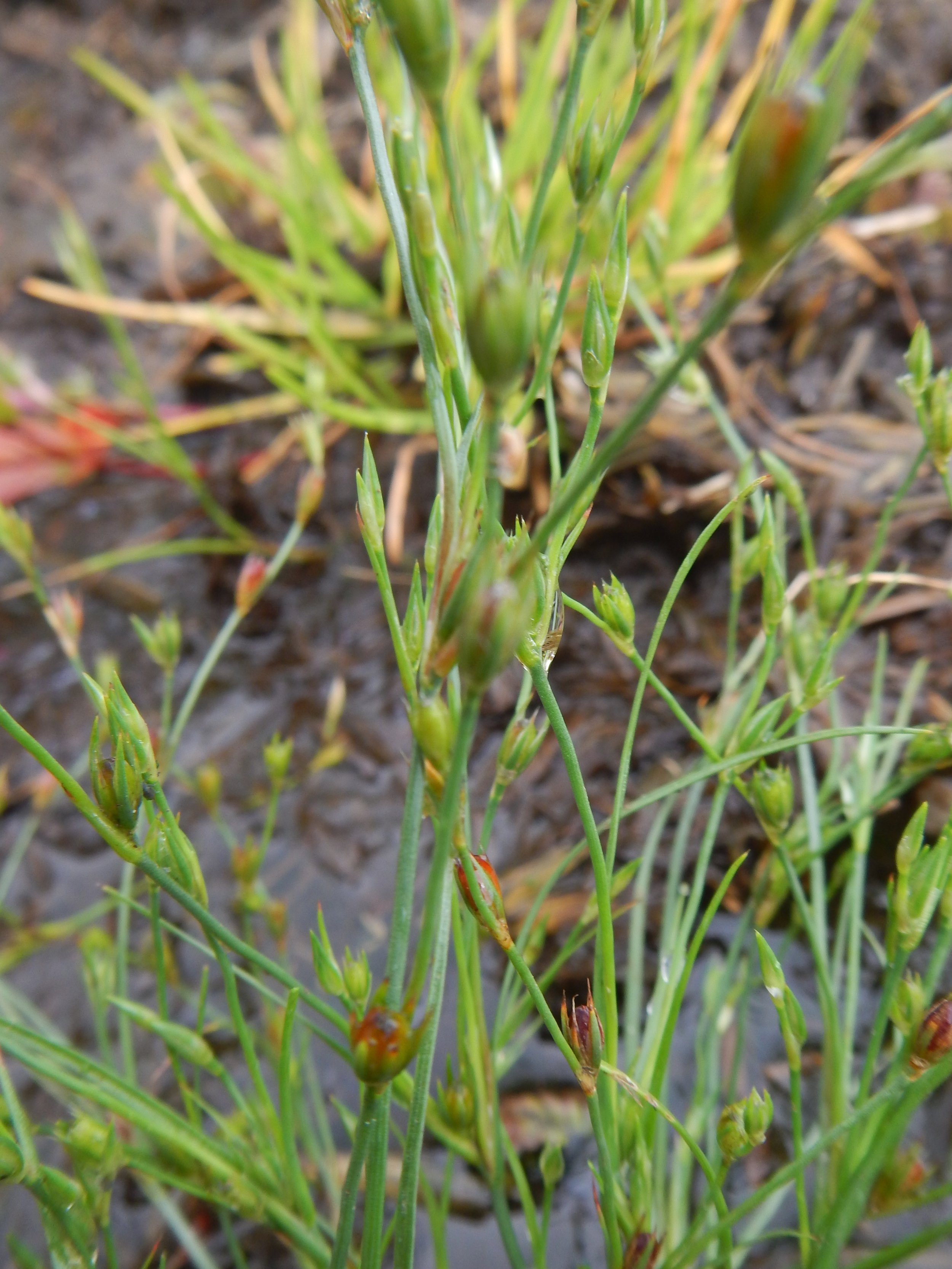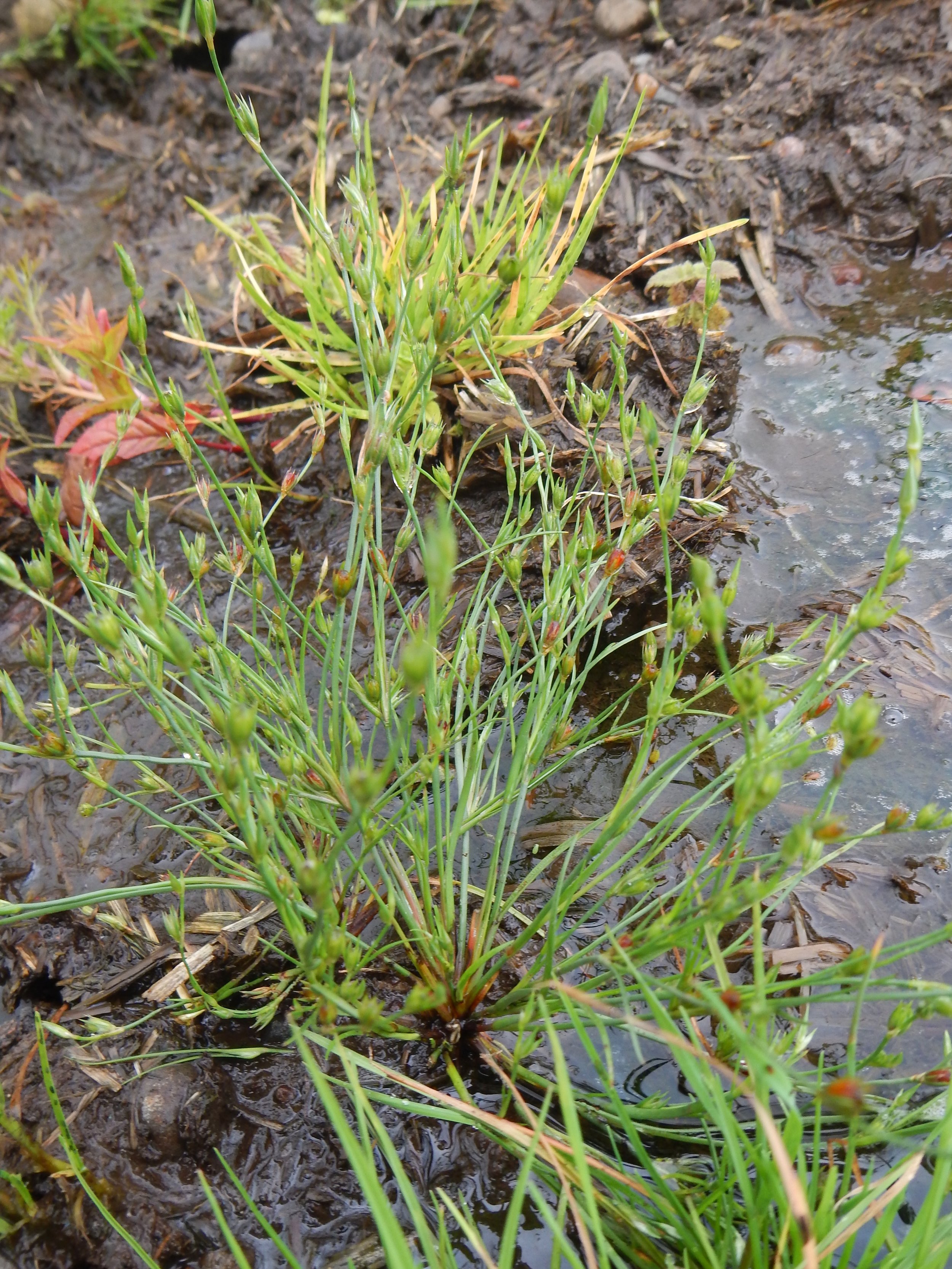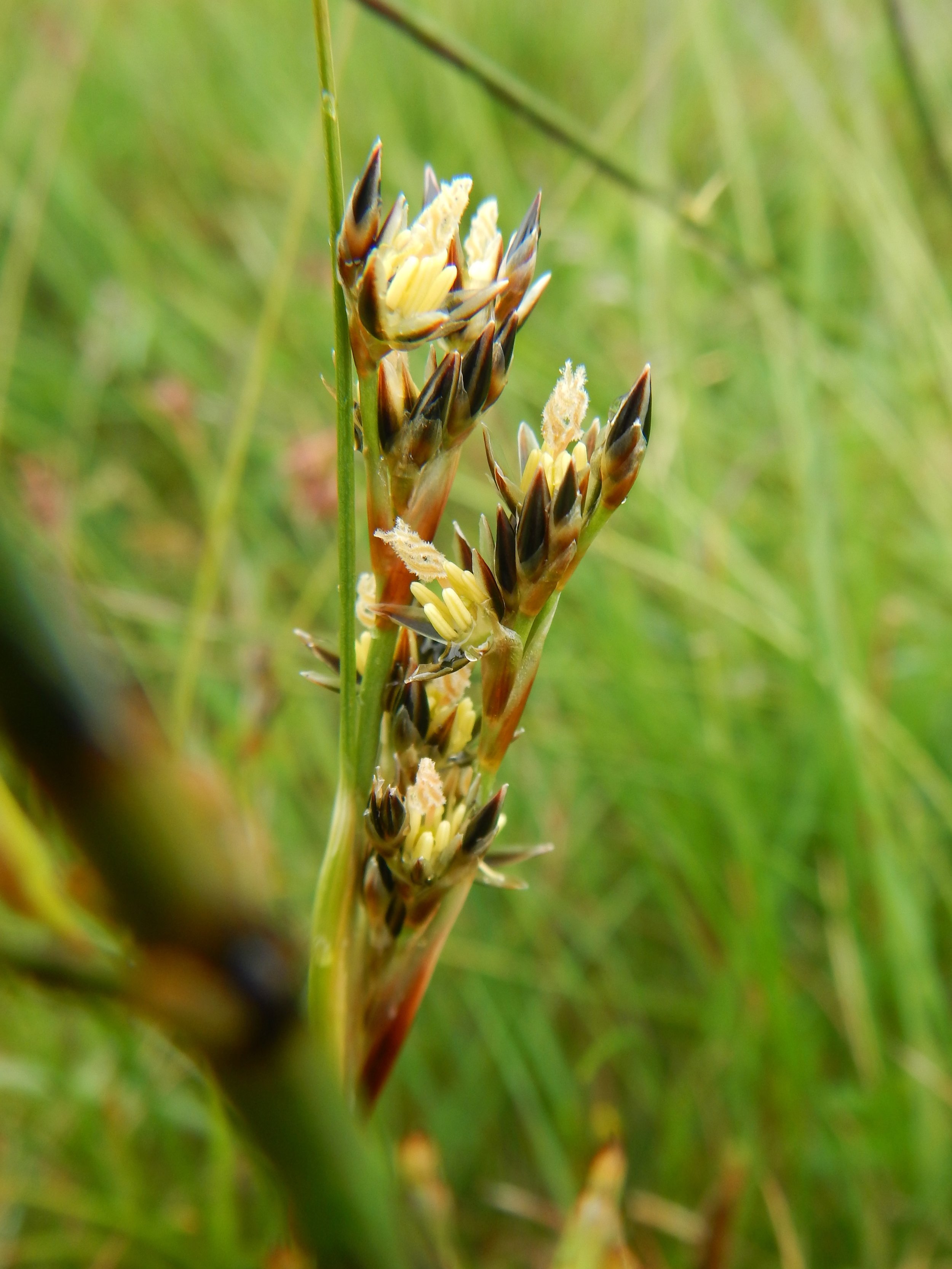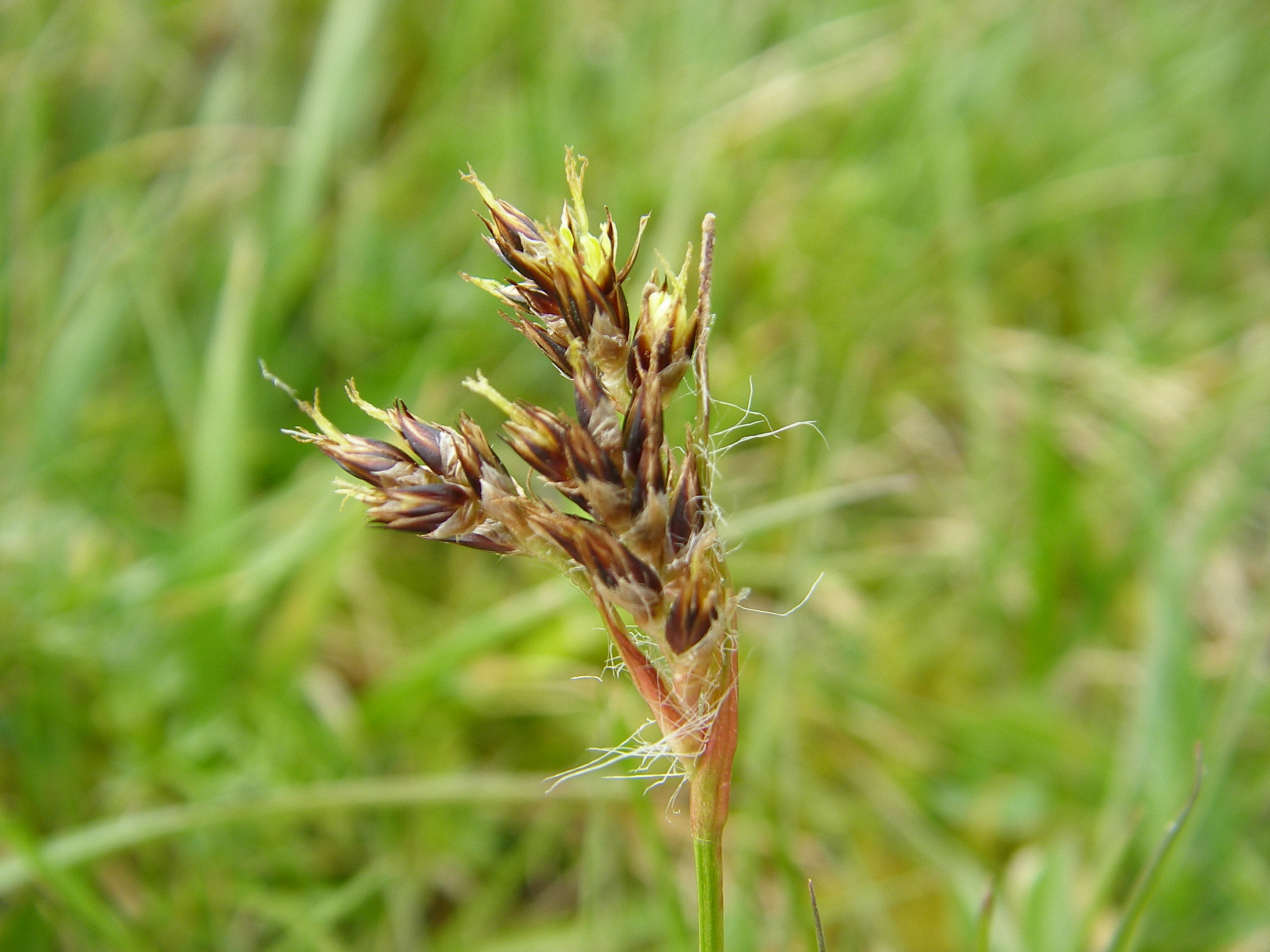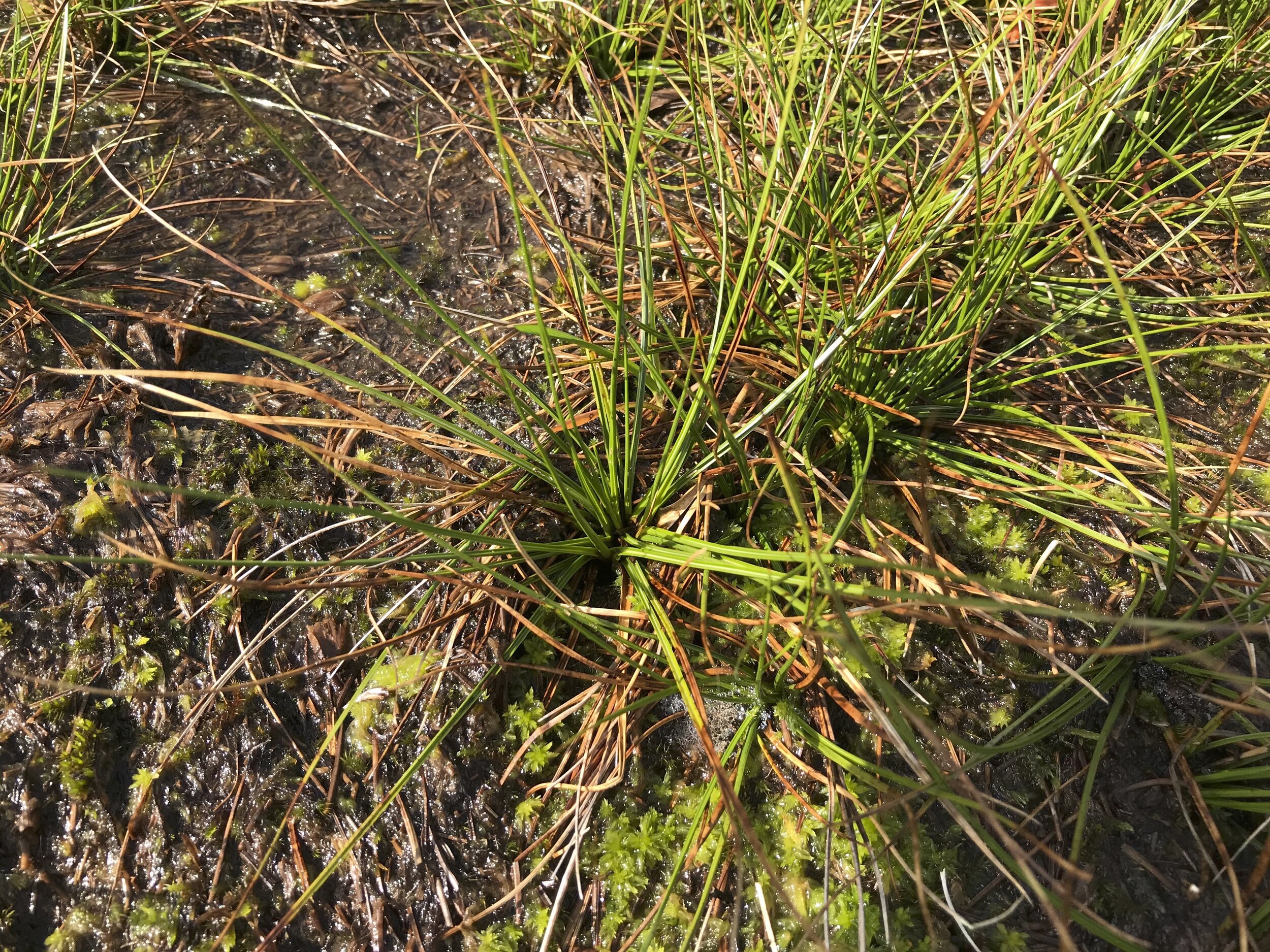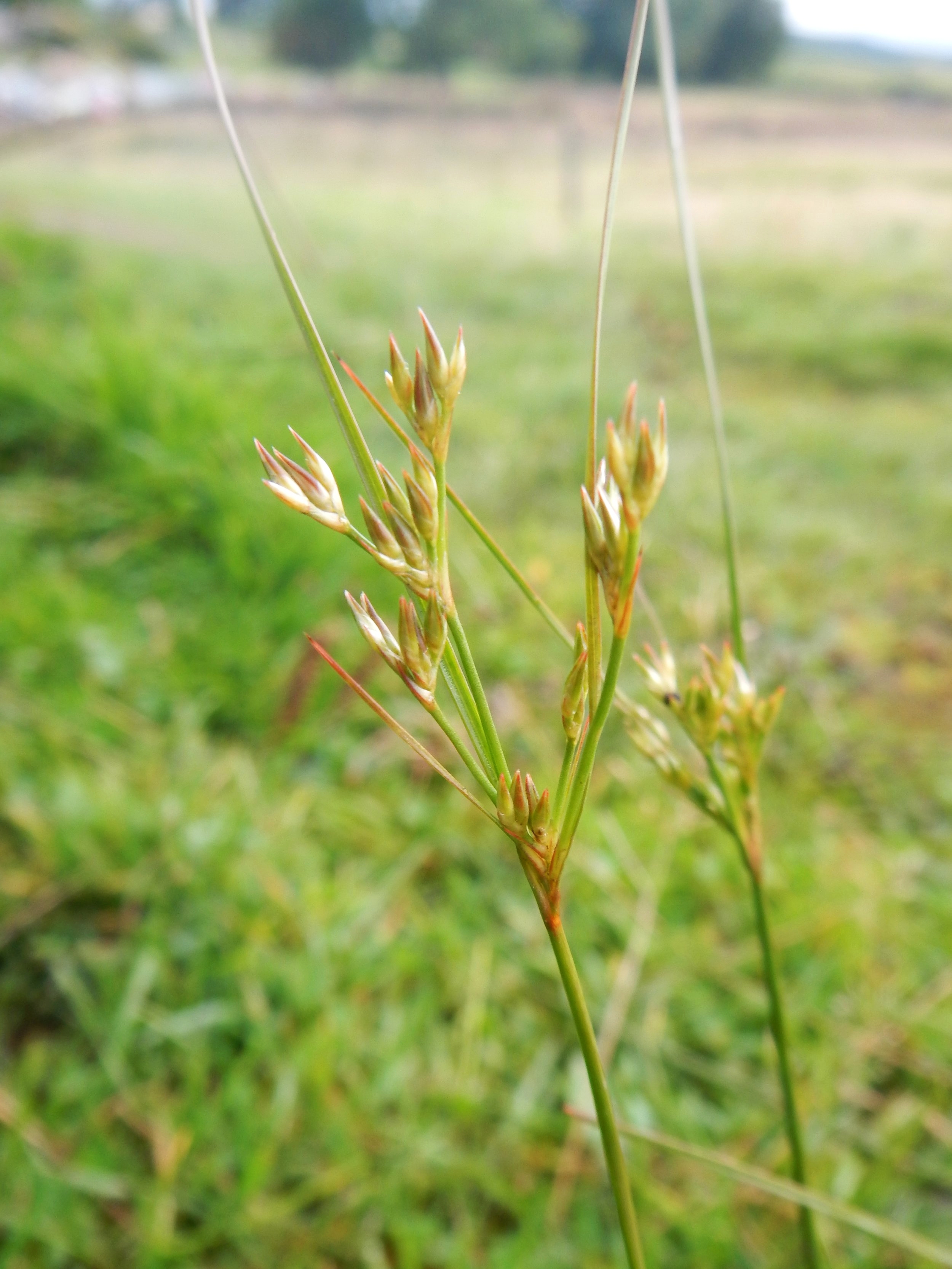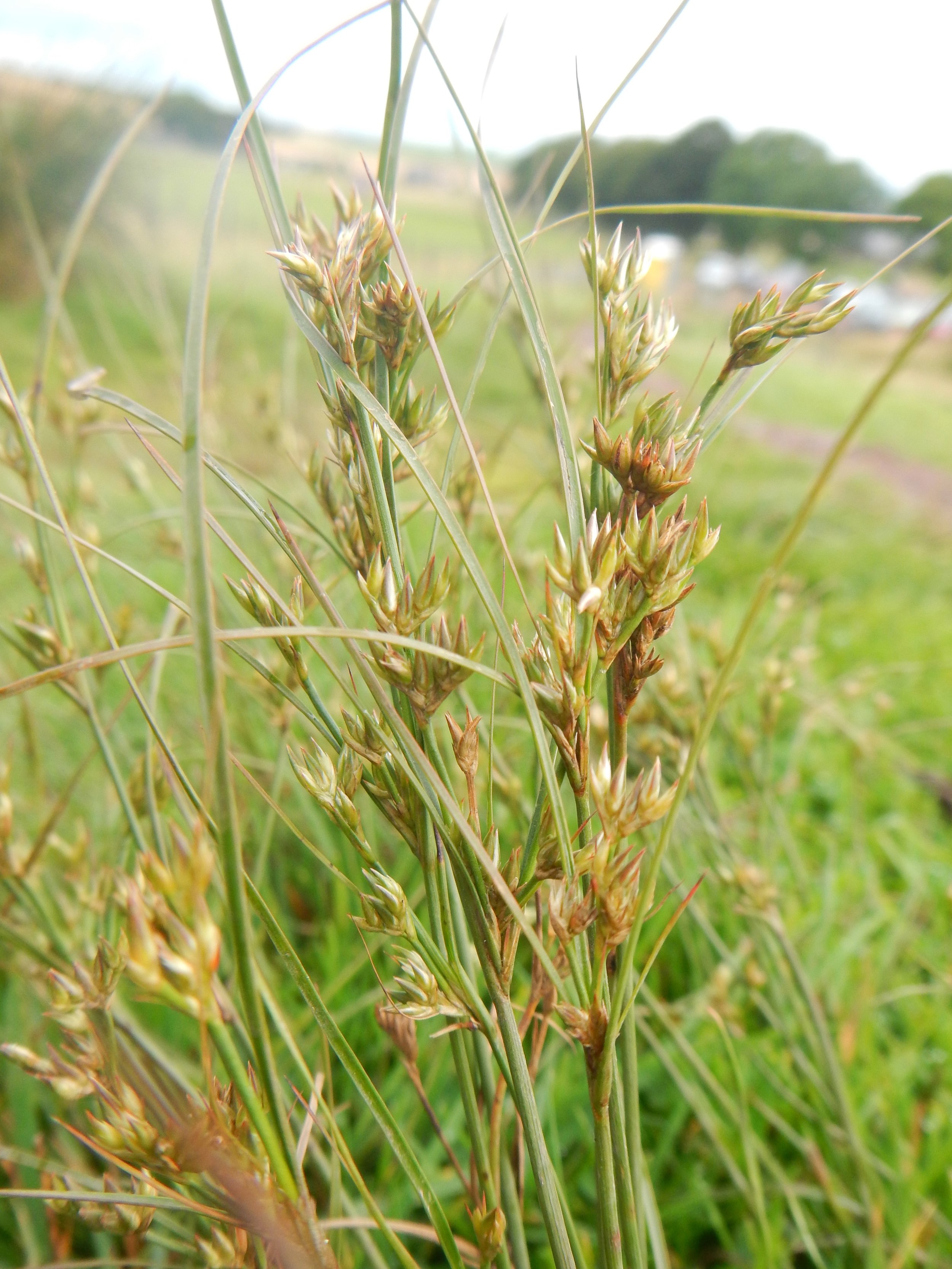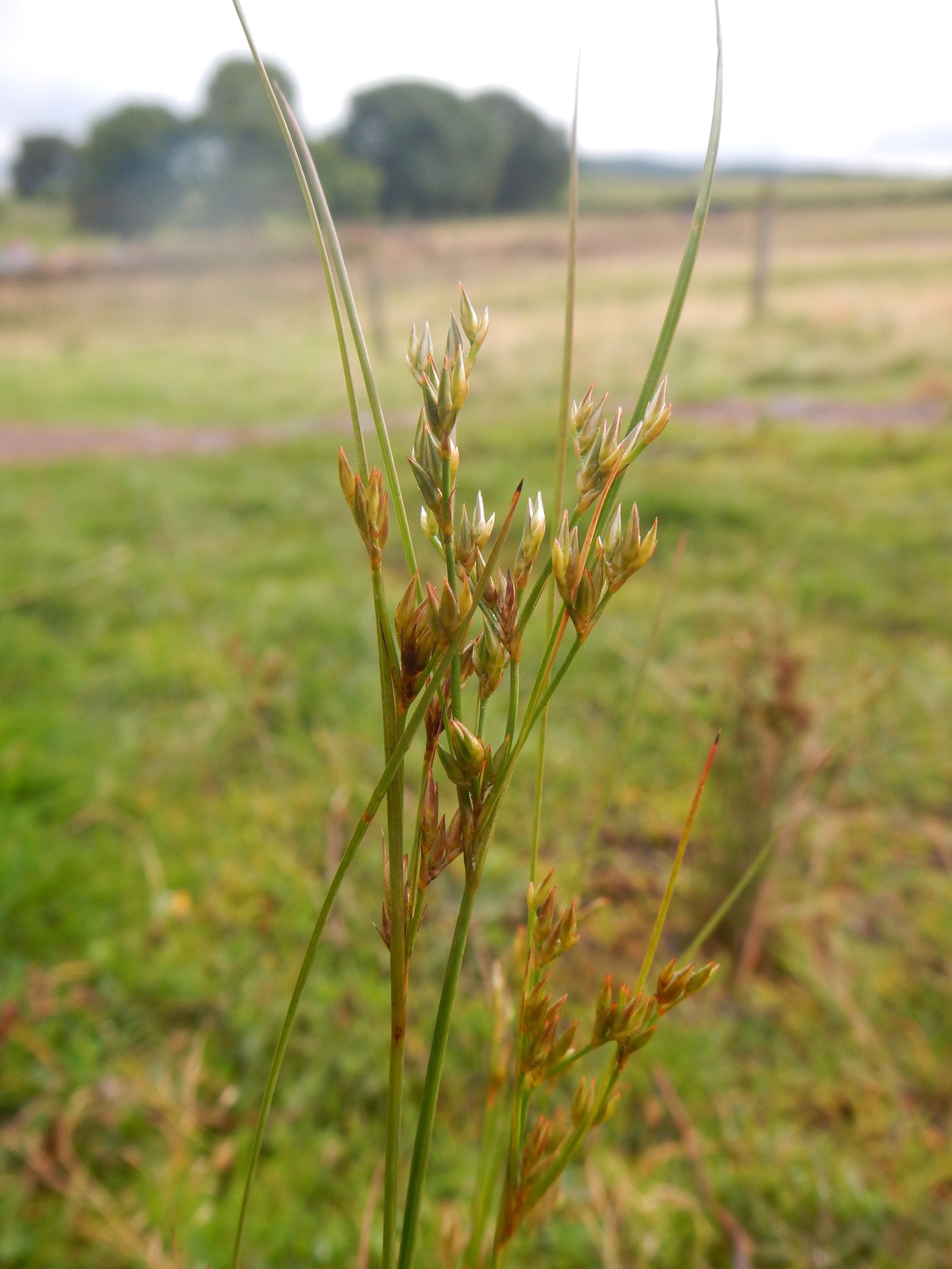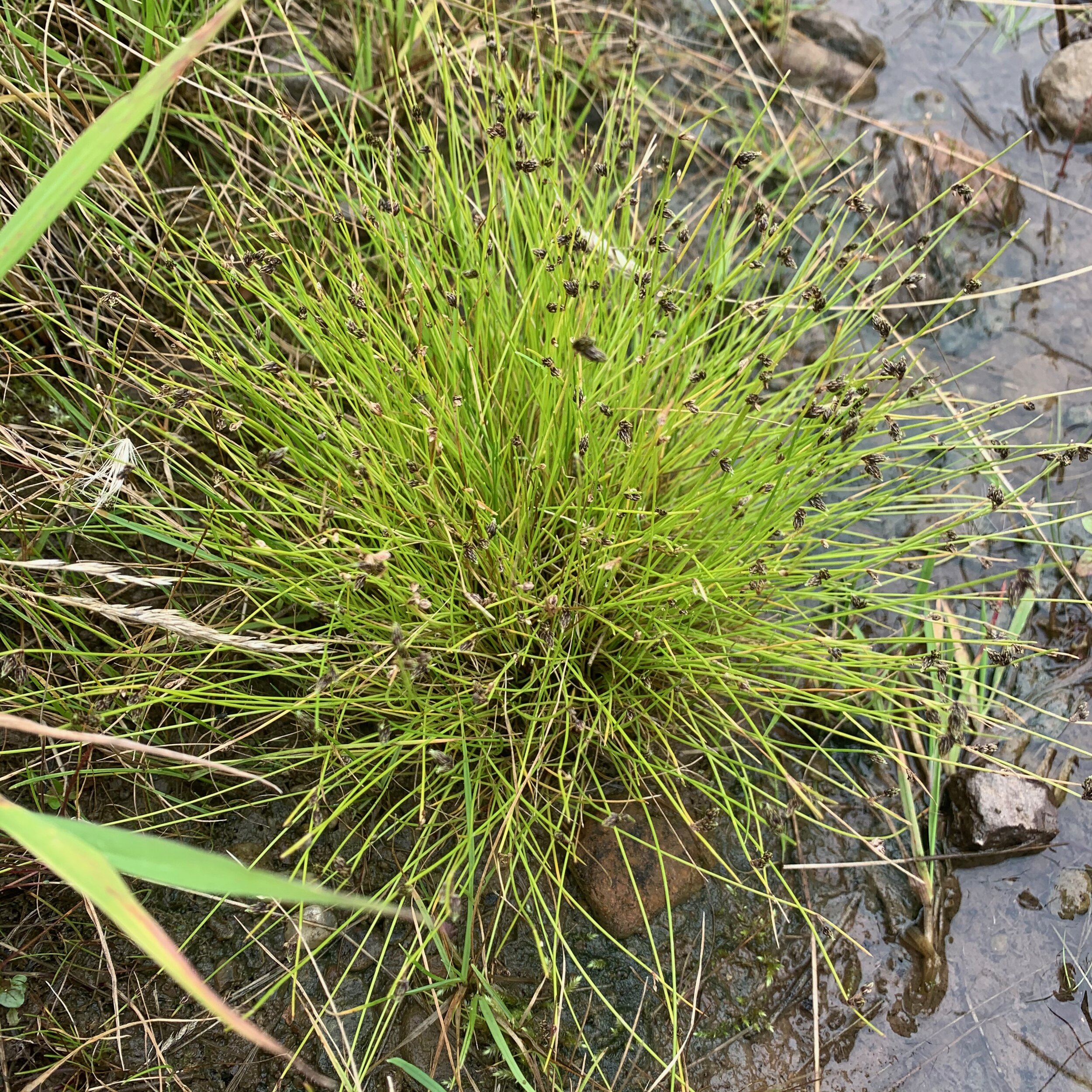Juncus species - Rush family
Juncs acutiflorus - Sharp Rush and J. articulatus - Jointed Rush are similar rushes with a few essential differences:
J. acutiflorus has a straight stem round leaves. Lowest bract beyond the inflorescence. Inflorescence is red-brown and the lower branches are 90º to the stem. Tepals are short-pointed and the outer ones arch outwards. all have very narrow pale margins. Fruit is tapered to a sharp point.
J. articulatus is more prostrate and stem arches upwards from tufted base. Cross partitions in the latterly flattened leaves. Longer and more open inflorescences with longer lower branches leaving at an acute angle to the stem. Tepals not so sharply pointed and the outer ones do not arch out. The colourless margins are more pronounced and broader. Capsule is shiny and black and suddenly narrowed to clear beak.
J. effusus - Soft Rush
There are three tall rushes on rough meadows and this is the commonest especially on acid ground.
The stem is slightly oval in shape and soft. It is smooth with no or very faint ridges ridges. These can be felt with the fingernail. The pith is uninterrupted.
The flower is a loose cluster but can be quite tight.
The fruit is normally shorter than the tepals, egg-shaped and indented at the top.
J. conglomeratus - Compact Rush
J. inflexus - Hard Rush
There are three tall rushes on rough meadows and this is the least frequent.
The stem is thinner and stiffer than the other two rushes. It has clear ridges which can be felt with the fingernail and an interrupted pith which can be felt if the stem is compressed as the finger moves up the stem.
The flower is a loose cluster with unequal length stalks. The fruit is egg-shaped and minutely pointed.
It dislikes acid ground and so is often found on the edge of disused industrial sites where concrete or gravel increase the pH.
Note: All three rushes J. effusus, conglomeratus and inflexus have bracts above the flower which appear to be a continuation of the stem, but may not share the characteristics. So always check the stem below the flower.
Juncus bufonius - Toad Rush
Juncus squarrosus - Heath Rush
Isolepis setacea - Bristle Club-rush
